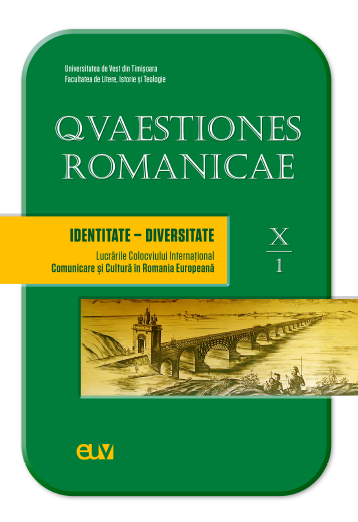Identitate și diversitate în descrierea „ciumei” din Athena (Thucydides 2, 47-54 – Lucretius 6.1138-1286)
Abstract: (Identity and diversity in the description of the "plague" of Athens (Thucydides 2, 47-54 – Lucretius 6.1138-1286)) One of the most famous episodes in the history of Thucydides' Peloponnesian War is the description of the "plague" of Athens in 430 BC. In the context of the second book, the episode follows and contrasts with the no less famous funeral speech of Pericles. In the description of the disease Thucydides had predecessors: the beginning of Homer's Iliad – the plague that Apollon throws at the Greek camp – and the episode of the plague that seizes Thebes described in Sophocles' Oedipus Tyrannus. Thucydides' "plague" combines medical vocabulary, comparable to technical texts from the Corpus Hippocraticum and Galen, with the author's reflections on the psychological effects of the disease on society. This description served as a model for the Latin poet Lucretius, who, in Book VI of De rerum natura, concludes his explanations of various natural phenomena with the picture of the Athenian plague. In this paper we aim to identify the common elements in the description of the plague, but especially the diverse character of the two descriptions in the specific context of the two works.
Keywords: Thucydides, Lucretius, plague, identity, diversity.
Rezumat: Unul din cele mai celebre episoade din istoria Războiului Peloponesiac a lui Thucydides este descrierea „ciumei” din Athena din anii 430 a.Chr. În contextul cărții a doua, episodul urmează și vine în contrast cu nu mai puțin celebrul discurs funebru al lui Pericles. În descrierea bolii, Thucydides avea predecesori: începutul Iliadei lui Homer – molima pe care Apollon o abate asupra taberei grecești – și episodul molimei care cuprinde Theba descris în Oedipus Tyrannus a lui Sophocles. „Ciuma” lui Thucydides îmbină vocabularul medical, comparabil cu texte tehnice din Corpus Hippocraticum și Galenos, cu reflecțiile autorului legate de efectele psihologice ale bolii asupra societății. Această descriere a servit drept model poetului latin Lucretius, care, în cartea a VI-a din De rerum natura, încheie explicațiile legate de diverse fenomene naturale cu tabloul molimei ateniene. Ne propunem în aceast articol să identificăm elementele comune în descrierea bolii, dar mai ales caracterul divers al celor două descrieri în contextul specific al celor două opere.
Cuvinte-cheie: Thucydides, Lucretius, molimă, identitate, diversitate.
